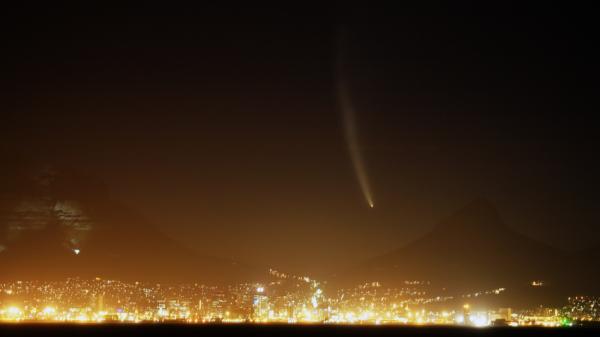Three comets to grace the 2013 winter skies
Three comets - comet ISON, comet Lovejoy and comet Encke will grace the winter skies in 2013. Here, timeanddate.com tells you everything you need to know about the comets, and when and where to view them.
Update: This event has passed

Comet McNaught over Cape Town, South Africa.
©iStockphoto.com/Don Bayley
Earlier this year, we predicted that 2013 would be a good year for comet watchers, with the most anticipated comet of the year, Comet ISON, visible to the naked eyes starting November 2013. Since then, astronomers have added two more comets to the lineup of comets to watch for towards the end of this year - Comet Lovejoy and Comet Encke.
C/2012 S1 (ISON)
C/2012 S1 or ISON is the most anticipated comet of the year. At the time of its discovery in 2012, many astronomers and media outlets called it the "comet of the century", speculating that it would glow as bright as the Moon.
The initial enthusiasm over the comet has however slightly waned in recent months. Astronomers believe that the comet may disintegrate when it makes its closest approach to the Sun (perhelion) on November 28. If it does not disintegrate, the comet will be visible to the naked eye in December even though it is not expected to be as bright as it was initially thought to be.
Observers from the Northern Hemisphere are best located to view ISON in the early mornings before and after it passes its perihelion. Those in the Southern Hemisphere may be able to view the comet low in the east at dawn until November 28.
C/2013 R1 (Comet Lovejoy)
Discovered in September 2013, by Australian amateur astronomer, Terry Lovejoy, Comet Lovejoy will be giving company to ISON in the November skies. However, unlike its counterpart, Lovejoy is not expected to be visible to the naked eyes - you may need to have access to a small telescope to enjoy this comet. The best time to view the comet is during the early morning hours.
Observers in the Southern Hemisphere will lose sight of the comet after November 19 when it makes its closest approach to the Earth.
2P/Encke (Comet Encke)
A third comet, Encke's Comet or 2p/Encke will share the skies with ISON and Lovejoy in November. A periodic comet - it makes a revolution around the Sun once every 3.3 years - Encke is expected to be visible throughout the month of November to observers in the Northern Hemisphere with binoculars.
See all 3 comets together
Astronomers suggest that the best time to view all of these comets will be on or around November 9 right before dawn in the southeastern sky. Since Lovejoy and Encke are not well suited to be viewed by the naked eye, so seeing all three comets will require a small telescope.